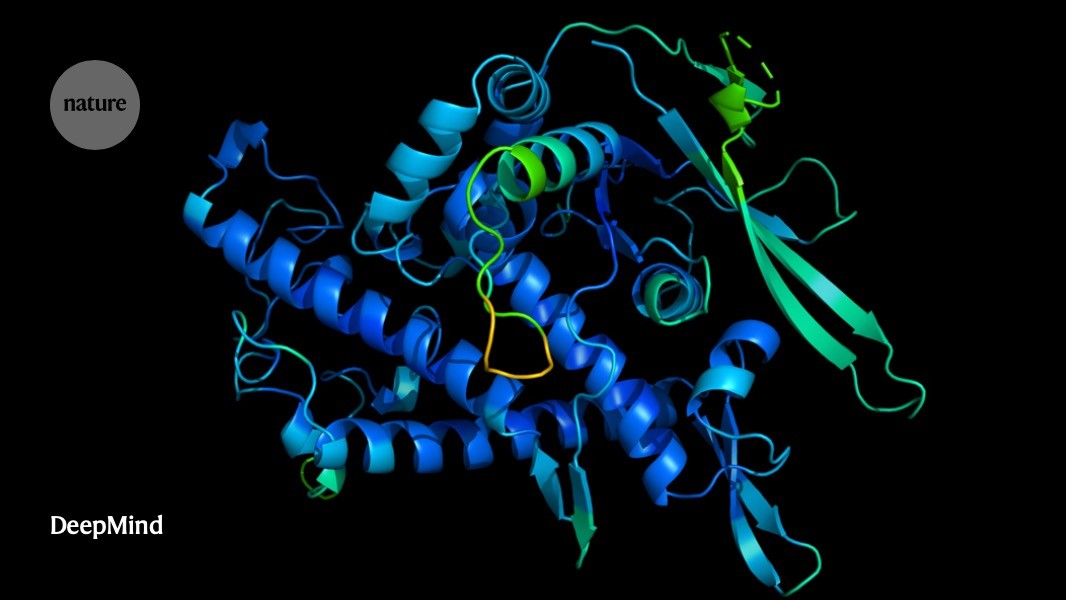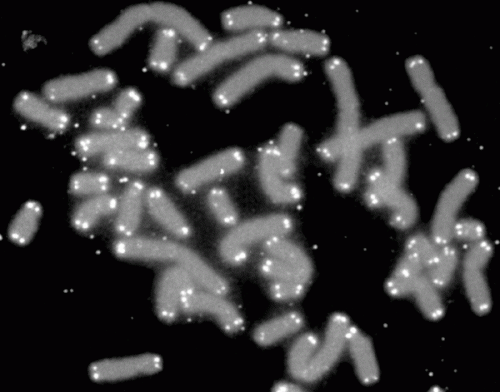- Aug 6, 2012
- 27,891
- 24,700
- 2,405
This is from a few weeks ago and it could mean everything. From solving all diseases to extending the lives of humans for a century (some have postulated). The problem of solving protein folding was solved with A.I and it illustrates just how valuable different learning processes are.
Whether using language to sift through old grandmasters of science and their work looking for potential errors or a new thread to pursue, Deep Learning (neural networks) are going to places that humans alone could not go without this technology.

 www.nature.com
www.nature.com
An artificial intelligence (AI) network developed by Google AI offshoot DeepMind has made a gargantuan leap in solving one of biology’s grandest challenges — determining a protein’s 3D shape from its amino-acid sequence.
DeepMind’s program, called AlphaFold, outperformed around 100 other teams in a biennial protein-structure prediction challenge called CASP, short for Critical Assessment of Structure Prediction. The results were announced on 30 November, at the start of the conference — held virtually this year — that takes stock of the exercise.
“This is a big deal,” says John Moult, a computational biologist at the University of Maryland in College Park, who co-founded CASP in 1994 to improve computational methods for accurately predicting protein structures. “In some sense the problem is solved.”
AI protein-folding algorithms solve structures faster than ever
The ability to accurately predict protein structures from their amino-acid sequence would be a huge boon to life sciences and medicine. It would vastly accelerate efforts to understand the building blocks of cells and enable quicker and more advanced drug discovery.
AlphaFold came top of the table at the last CASP — in 2018, the first year that London-based DeepMind participated. But, this year, the outfit’s deep-learning network was head-and-shoulders above other teams and, say scientists, performed so mind-bogglingly well that it could herald a revolution in biology.
“It’s a game changer,” says Andrei Lupas, an evolutionary biologist at the Max Planck Institute for Developmental Biology in Tübingen, Germany, who assessed the performance of different teams in CASP. AlphaFold has already helped him find the structure of a protein that has vexed his lab for a decade, and he expects it will alter how he works and the questions he tackles. “This will change medicine. It will change research. It will change bioengineering. It will change everything,” Lupas adds.
In some cases, AlphaFold’s structure predictions were indistinguishable from those determined using ‘gold standard’ experimental methods such as X-ray crystallography and, in recent years, cryo-electron microscopy (cryo-EM). AlphaFold might not obviate the need for these laborious and expensive methods — yet — say scientists, but the AI will make it possible to study living things in new ways.
The structure problem
Proteins are the building blocks of life, responsible for most of what happens inside cells. How a protein works and what it does is determined by its 3D shape — ‘structure is function’ is an axiom of molecular biology. Proteins tend to adopt their shape without help, guided only by the laws of physics.
For decades, laboratory experiments have been the main way to get good protein structures. The first complete structures of proteins were determined, starting in the 1950s, using a technique in which X-ray beams are fired at crystallized proteins and the diffracted light translated into a protein’s atomic coordinates. X-ray crystallography has produced the lion’s share of protein structures. But, over the past decade, cryo-EM has become the favoured tool of many structural-biology labs.
Scientists have long wondered how a protein’s constituent parts — a string of different amino acids — map out the many twists and folds of its eventual shape. Early attempts to use computers to predict protein structures in the 1980s and 1990s performed poorly, say researchers. Lofty claims for methods in published papers tended to disintegrate when other scientists applied them to other proteins.
Moult started CASP to bring more rigour to these efforts. The event challenges teams to predict the structures of proteins that have been solved using experimental methods, but for which the structures have not been made public. Moult credits the experiment — he doesn’t call it a competition — with vastly improving the field, by calling time on overhyped claims. “You’re really finding out what looks promising, what works, and what you should walk away from,” he says.

Whether using language to sift through old grandmasters of science and their work looking for potential errors or a new thread to pursue, Deep Learning (neural networks) are going to places that humans alone could not go without this technology.

‘It will change everything’: DeepMind’s AI makes gigantic leap in solving protein structures
Google’s deep-learning program for determining the 3D shapes of proteins stands to transform biology, say scientists.
An artificial intelligence (AI) network developed by Google AI offshoot DeepMind has made a gargantuan leap in solving one of biology’s grandest challenges — determining a protein’s 3D shape from its amino-acid sequence.
DeepMind’s program, called AlphaFold, outperformed around 100 other teams in a biennial protein-structure prediction challenge called CASP, short for Critical Assessment of Structure Prediction. The results were announced on 30 November, at the start of the conference — held virtually this year — that takes stock of the exercise.
“This is a big deal,” says John Moult, a computational biologist at the University of Maryland in College Park, who co-founded CASP in 1994 to improve computational methods for accurately predicting protein structures. “In some sense the problem is solved.”
AI protein-folding algorithms solve structures faster than ever
The ability to accurately predict protein structures from their amino-acid sequence would be a huge boon to life sciences and medicine. It would vastly accelerate efforts to understand the building blocks of cells and enable quicker and more advanced drug discovery.
AlphaFold came top of the table at the last CASP — in 2018, the first year that London-based DeepMind participated. But, this year, the outfit’s deep-learning network was head-and-shoulders above other teams and, say scientists, performed so mind-bogglingly well that it could herald a revolution in biology.
“It’s a game changer,” says Andrei Lupas, an evolutionary biologist at the Max Planck Institute for Developmental Biology in Tübingen, Germany, who assessed the performance of different teams in CASP. AlphaFold has already helped him find the structure of a protein that has vexed his lab for a decade, and he expects it will alter how he works and the questions he tackles. “This will change medicine. It will change research. It will change bioengineering. It will change everything,” Lupas adds.
In some cases, AlphaFold’s structure predictions were indistinguishable from those determined using ‘gold standard’ experimental methods such as X-ray crystallography and, in recent years, cryo-electron microscopy (cryo-EM). AlphaFold might not obviate the need for these laborious and expensive methods — yet — say scientists, but the AI will make it possible to study living things in new ways.
The structure problem
Proteins are the building blocks of life, responsible for most of what happens inside cells. How a protein works and what it does is determined by its 3D shape — ‘structure is function’ is an axiom of molecular biology. Proteins tend to adopt their shape without help, guided only by the laws of physics.
For decades, laboratory experiments have been the main way to get good protein structures. The first complete structures of proteins were determined, starting in the 1950s, using a technique in which X-ray beams are fired at crystallized proteins and the diffracted light translated into a protein’s atomic coordinates. X-ray crystallography has produced the lion’s share of protein structures. But, over the past decade, cryo-EM has become the favoured tool of many structural-biology labs.
Scientists have long wondered how a protein’s constituent parts — a string of different amino acids — map out the many twists and folds of its eventual shape. Early attempts to use computers to predict protein structures in the 1980s and 1990s performed poorly, say researchers. Lofty claims for methods in published papers tended to disintegrate when other scientists applied them to other proteins.
Moult started CASP to bring more rigour to these efforts. The event challenges teams to predict the structures of proteins that have been solved using experimental methods, but for which the structures have not been made public. Moult credits the experiment — he doesn’t call it a competition — with vastly improving the field, by calling time on overhyped claims. “You’re really finding out what looks promising, what works, and what you should walk away from,” he says.


